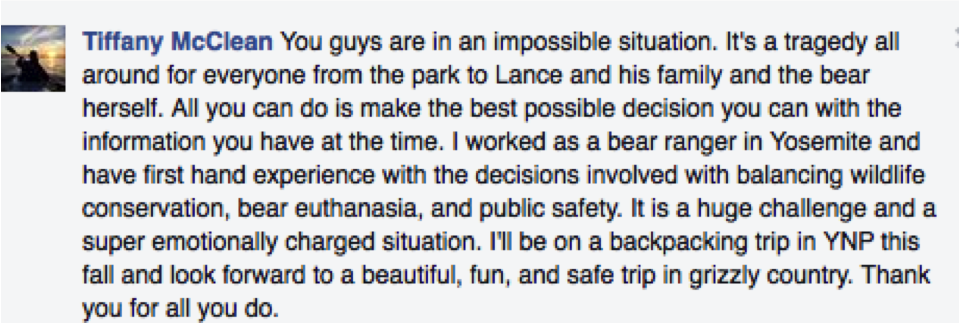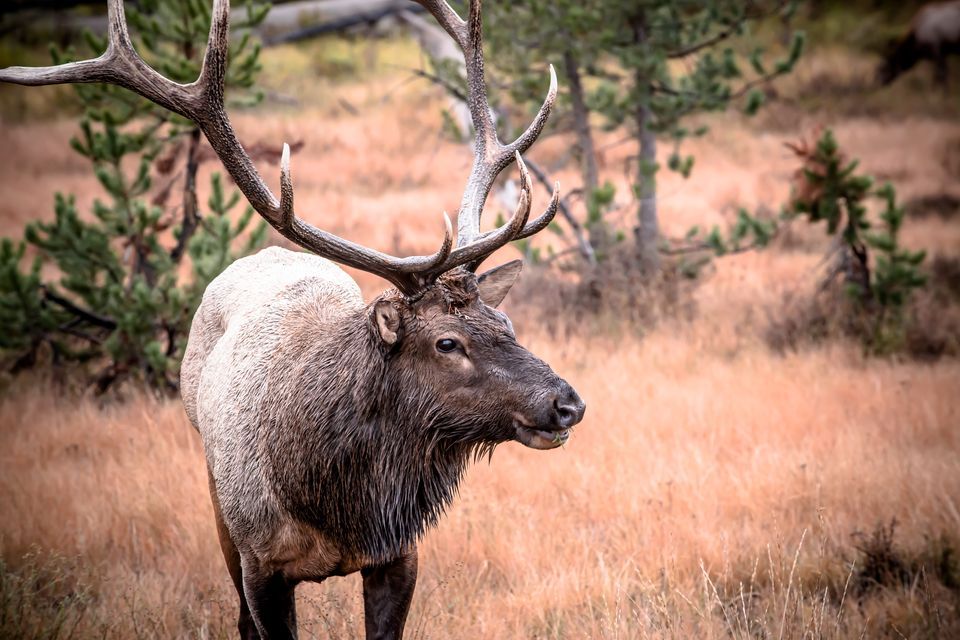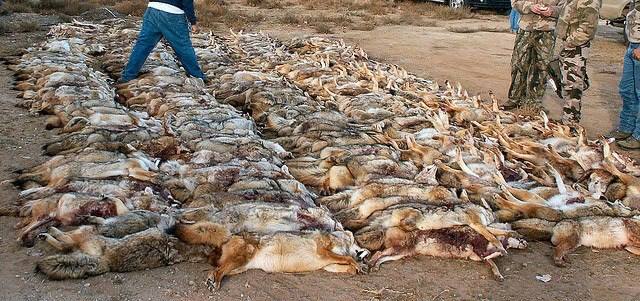![]()
(EnviroNews Wyoming) — Missoula, Montana — In a move that has angered environmentalists and wildlife enthusiasts, the U.S. Fish and Wildlife Service (USFWS) proposed on March 3, 2016, to strip the iconic Greater Yellowstone Ecosystem (GYE) grizzly bear of its protected status under the Endangered Species Act (ESA), recommending that state-based conservation plans be used to manage the population instead.
Those management plans could also open the door for grizzly hunting — a practice that’s been outlawed in the lower 48 states since 1975 when the species was first listed to the ESA — and a practice wildlife organizations say they won’t stand for.
Ursus arctos horribilis, as the great bear is scientifically know, is currently listed as threatened by the USFWS, and occupies less than two percent of its historic home-range. The legendary predator had been poached to near extinction by the mid-twentieth century, and was one of the first species in America to receive protection under the Endangered Species Preservation Act of 1966. A few years later, the grizzly would also become one of the first to be listed to the ESA after it became law in 1973.
Numbers had dipped as low as 136 in the Yellowstone-Teton region back in 1975. Today, that same population harbors somewhere in the neighborhood of 715 animals — an improvement USFWS is calling a “historic success” — and a point the Service is using to justify delisting the Yellowstone grizzly. But not everyone agrees with that assessment. Environmental groups point out the species occupies a dismally low portion of its once expansive range, and say the creature should remain safely protected under the ESA.
“Like history repeating itself, the Service is once again attempting to evade its duty to protect imperiled wildlife on behalf of all Americans,” said Kelly Nokes, carnivore campaign lead for environmental group WildEarth Guardians. “The Service should be devoting public resources toward achieving grizzly bears’ recovery across their range, not cherry-picking one population to prematurely declare success while undermining restoration everywhere else,” Nokes continued.
WildEarth Guardians also says delisting the bear before any solid state conservation plans are in place to protect it would be a knee-jerk reaction, stating in a press release, “the proposed stripping of protections [are] based on mere promises of future actions.”
But not everyone is mad about the proposed delisting. Hunters, ranchers, multi-party conservation groups and government agencies are cheering the idea, saying that ESA protections are supposed to be used only to salvage a species and help its numbers to recover, whereafter the states should take over.
The Interagency Grizzly Bear Committee, a group containing the Forest Service (USFS), Fish and Wildlife Service (USFWS), Bureau of Land Management (BLM), National Park Service (USNPS), the state wildlife agencies of Montana, Idaho, Wyoming and Washington, as well as the British Columbia Wildlife Branch, the Alberta Wildlife Branch, and Parks Canada wrote this in a statement:
The Interagency Grizzly Bear Committee (IGBC) is encouraged by the announcement by the United States Fish & Wildlife Service that it is beginning the final step in the process to delist the Yellowstone Ecosystem grizzly bear population. According to IGBC Chair and Director of the Washington Department of Fish & Wildlife James Unsworth, “It has only been through decades of committed scientific management by IGBC member agencies that the Yellowstone grizzly population has met and exceeded all biological goals set forth in the recovery plan. The goal of the Endangered Species Act is to bring populations back to the point that the states can resume control. In the case of the Yellowstone grizzly we have met that goal.
But environmental groups fired back, saying the bear would surely come under assault from multiple angles should current protections be removed. “It’s simply too soon to remove protections for grizzly bears,” asserted Andrea Santarsiere, an attorney with the Center for Biological Diversity. “We’re prepared to make sure the Service follows the science and the law to ensure these wonderful animals can truly recover,” Santarsiere continued. “We’re disappointed that the Obama administration is taking such a narrow view of grizzly bear recovery.”
![Yellowstone Grizzly Bear]()
Yellowstone Grizzly Bear
On the other hand, USFWS says the number of animals in the region has remained roughly the same over the past decade, indicating a “stable” population and pronouncing, “the Yellowstone ecosystem is at or near its carrying capacity for the bears.”
Even if that is the case, some grizzly bear biologists also fear the Yellowstone population could run into a problem with lack of genetic diversity, and say the bear should remain protected — at least until the Yellowstone population can be adjoined to other still unconnected sub-populations. Environmental groups hold little faith in state-run conservation efforts, and say linking populations will be difficult without current ESA protections.
But USFWS Director Dan Ashe claims recovery can continue just fine with the states taking over. “Even with this proposed delisting, the service remains committed to the conservation of the Yellowstone grizzly bear, and will stay engaged to ensure that this incredible species remains recovered,” he said.
U.S. FISH AND WILDLIFE SERVICE HAS TRIED AND FAILED TO DELIST THE GRIZZLY BEFORE
USFWS tried to remove protections for the grizzly a decade ago, but a federal judge shot them down following legal challenges. Now the Service is trying again, and these efforts will surely not go uncontested either.
What’s interesting in this story though, is that USFWS is not proposing merely to maintain what it calls a “stable” population — the agency is actually suggesting to reduce the number of bears for the region to 500 — a would-be drop of over 200.
“The bears will be treated as a game species after federal protections are removed, opening them up to extremely controversial sport hunting seasons in Wyoming, Montana and Idaho,” wrote WildEarth Guardians in its press release.
The possibility that conservative western states, like Idaho and Montana, would deploy hunting as part of their “conservation” strategies, must be taken very seriously. For example, Idaho’s highly controversial “wolf-killing derbies” should be examined as part of a historical track record when addressing predator conservation plans in these places. Experts tell EnviroNews Wyoming it seems likely Idaho, Montana and Wyoming could deploy similar hunts on grizzlies if the new rule takes hold.
(EnviroNews Idaho) – Facing a lawsuit from conservation groups, the Bureau of Land Management (BLM) has revoked a permit allowing for a “predator derby” to take place on approximately three million acres of public lands in north-central Idaho near the town of Salmon. The derby originally called…
(EnviroNews California) – Van Nuys, CA – Will not allowing prizes for California wildlife hunting derbies deter such events from taking place? Groups like Project Coyote certainly think so. On December 3, with a 4 to 1 vote, the California Fish and Game Commission passed a motion…
PUBLIC COMMENT PERIOD UNDERWAY ON DELISTING OF YELLOWSTONE GRIZZLY
EDITOR’S NOTE: This section was amended by the EnviroNews Wyoming Editor on March 20, 2016, to reflect the opening of the public comment period.
USFWS is now holding a 60-day public comment period on the draft conservation strategy, and the supplemental 1993 Grizzly Bear Recovery Plan (Yellowstone population), where it intends to review opinions from agencies, scientists, and the public at large. Nokes told EnviroNews Wyoming it is “highly likely” WildEarth Guardians and others will “seek to have the comment period extended.”
USFWS is encouraging citizens and experts alike to make their voices heard. Members of the public may visit the following link to post their official comment in the Federal Resister: https://www.federalregister.gov/articles/2016/03/11/2016-05167/endangered-and-threatened-wildlife-and-plants-removing-the-greater-yellowstone-ecosystem-population
A BEAR OF A BATTLE TO COME
WildEarth Guardians and Center for Biological Diversity, have achieved victorious rulings in court over the federal government on hundreds of imperiled wildlife species. In fact, the two organizations alone, have forced USFWS to move forward on protections for some 800 species. To say the groups strongly oppose USFWS’ March 3 announcement would be an understatement.
“Though grizzlies occupy less than two-percent of their historic range in the lower-48 states, the Service decided to place political interests ahead of its duty to recover the species as a whole,” said WildEarth Guardians.
Center for Biological diversity already filed a petition with USFWS in June of 2014, requesting the Service revise and beef up its recovery plan for Ursus arctos — a request the Center says has fallen on deaf ears. The non-profit organization maintains there are still multiple areas in the bear’s historic range that are suitable for it to thrive — and it wants to see the animals reintroduced there.
![Yellowstone Grizzly -- Photo: Wikimedia Commons]()
Yellowstone Grizzly — Photo: Wikimedia Commons
The Center says the Selway-Bitterroot, Sierra Nevada Mountains in California, southern Rockies of Colorado and Grand Canyon area in Arizona are prime targets. Others say Utah’s Uintah Mountains and additional areas in both Utah and Idaho could harbor the bear as well.
WildEarth Guardians indicated to EnviroNews Wyoming that multi-group legal action is highly probable should USFWS choose to move ahead with the proposed delisting. Endangered species battles of this nature have a historic track record of dragging out for years-on-end in court before settlements or final rulings are achieved.
THE MIGHTY GRIZZLY, TOO MIGHTY FOR AMERICAN SOCIETY
Native American cultures revered, respected and even feared the mighty grizzly bear for its obvious physical power, but also for its spiritual qualities, whereas European colonists sought to wipe the creature from the face of the earth completely. That’s not to say every person of European decent or white skin color desired genocide for the iconic predator, but the same can’t be said for American society altogether, as grizzlies were hunted to complete extinction over most of their home-range.
Native Americans, as a whole, didn’t set out to obliterate the grizzly — but European pioneers did. This is not a racial point — simply a historical fact.
Sadly, the livestock-based existence of “civilized” society, just didn’t jive with the lumbering lifestyle of America’s most powerful predator — in a world in which it was the boss and had no human telling it where it could and couldn’t roam — in a world in which it wasn’t confined to zoos or the boundaries of parks and wildlife preserves.
AMERICA’S MOST POWERFUL PREDATOR REDUCED TO RUBBLE
There are six recognized distinct population segments of grizzly: The Greater Yellowstone Ecosystem (GYE), North Cascades sub-population, Northern Continental Divide Ecosystem (Glacier National Park area), the Selway-Bitterroot Ecosystem of Idaho and Montana, the Cabinet-Yaak sub-population, and the Selkirk sub-population.
To be clear, USFWS’ proposed rule is only targeted at the GYE population, but environmental groups say this smells of a sneaky backdoor way to delist the entire grizzly bear species piece-by-piece — a move they say is not only shady, but also unlawful.
Noteworthy on this point is the fact that in the case Humane Society of the United States v. Jewell, the D.C. District Court ruled that the Service cannot remove a distinct population segment from the ESA for the purpose of delisting a species as a whole in piecemeal fashion.
“Yellowstone grizzly bears are an isolated population that is experiencing high levels of conflicts with people and is likely declining in the wake of the loss of whitebark pine, a critically important food source,” said Sylvia Fallon, a senior scientist at Natural Resource Defense Council (NRDC).
No matter which way the pie is sliced, two-four percent of its historic range, doesn’t sound like much of a recovery at all to many wildlife lovers.
THE FUTURE OF THE GREAT GRIZZLY
Today, the grizzly remains in few places, with a grand total of around 1,500 specimens in the lower 48 states — down from 50,000. All but about 100 or so of those bears exist in Montana and Wyoming with about half of those belonging to the aforementioned Yellowstone-Teton population. Around 100 bears reside between eastern and northern Idaho with another 20 bears taking refuge in Washington’s Cascade Mountains. Sightings have been reported in both Utah and Colorado, though no official confirmation has been made in any of these cases.
Several legal attempts to reintroduce grizzlies into historic territories have been shot down in court over the years, leaving many to wonder if or when the lumbering giant will ever return to former strongholds of its once immense home.
Center for Biological Diversity, a group that boasts a 93% success rate in endangered species court battles, failed with a petition to introduce the grizzly to California recently, leaving people to wonder if a grizzly bear will ever step foot in the Golden State again.
In December of 2014, the Center also introduced a petition to reintroduce grizzlies into the Idaho-Montana adjoining Selway-Bitterroot — a proposal the organization said could have tremendous ecological benefit by connecting into the Yellowstone population. The region had been designated as a target for reintroduction by USFWS in 1993, but the idea was stifled during the George W. Bush administration.
Real estate, agriculture and energy production are gobbling up the West at a baffling pace. With myriad threats facing the grizzly bear, how will the species not only survive, but thrive, in a once vast wilderness, now fast disappearing.
MORE ON YELLOWSTONE BEARS FROM ENVIRONEWS WYOMING
(EnviroNews Wyoming) – Yellowstone National Park – It was a sobering outcome for social media activists who had been clamoring to #SpareTheBear . Despite the tumult on Twitter and fury on Facebook, Yellowstone Park managers were undeterred. The park announced from the beginning, it would euthanize the…
(EnviroNews Wyoming) – In what is to serve as the official launch of EnviroNews Wyoming, this awesome video from the archives demonstrates a very young black bear grazing on grass and various plants in a large meadow in Yellowstone National Park in Wyoming. While taping the episode,…
The post Feds Attempting to Strip Yellowstone Grizzly Bear of Endangered Species Act Protection appeared first on EnviroNews | The Environmental News Specialists.











































